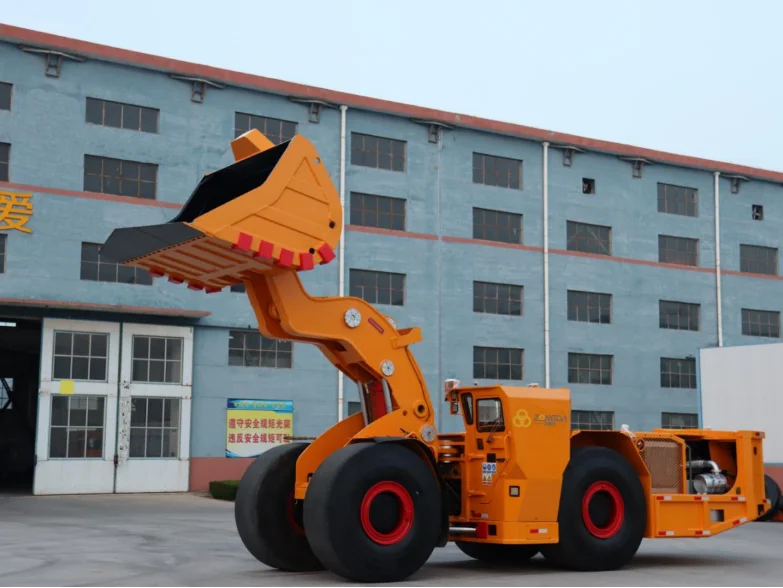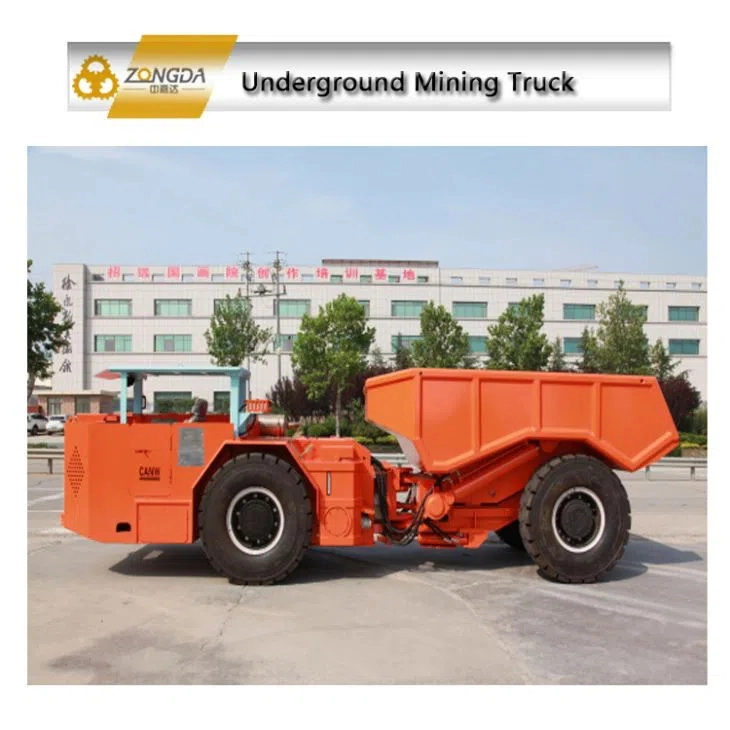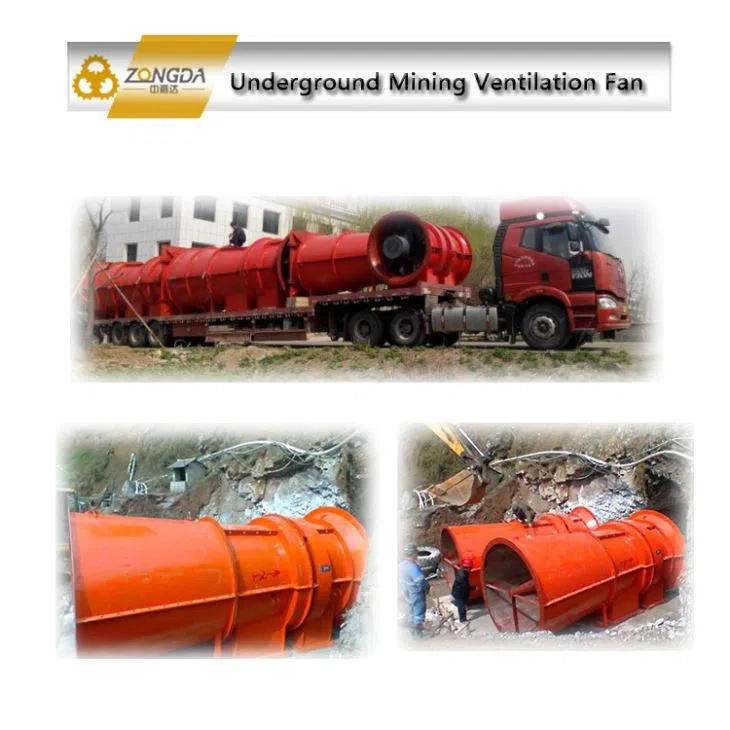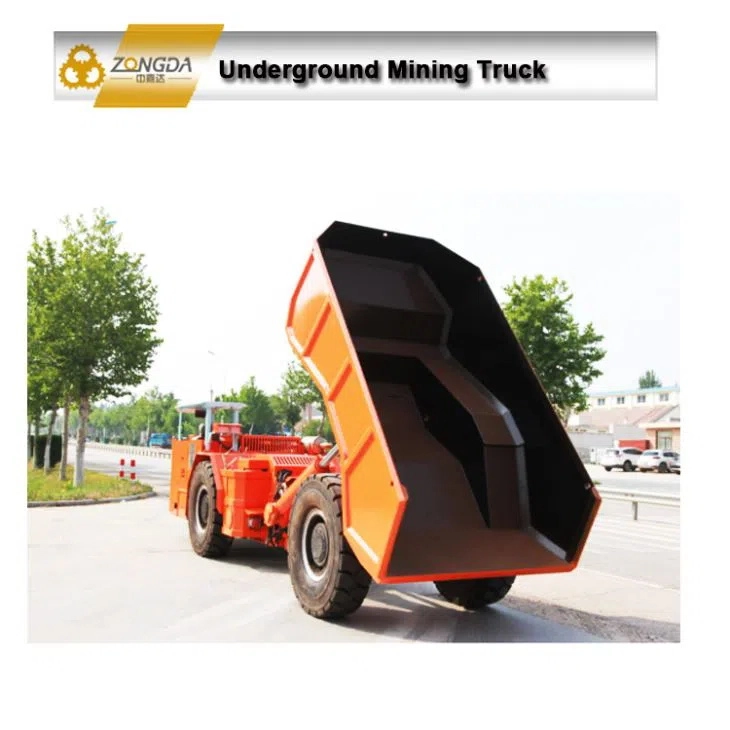Key Features of Diesel Underground Mining Loaders
Design and Structure for Emission Control
Diesel underground mining loaders are carefully crafted to satisfy the needs of underground mining tasks while tackling emission issues. Their framework includes cutting-edge engineering to lessen environmental harm. For example, the use of a central hinged and slewing bearing type body swing structure boosts stability and ease of movement in tight tunnels. This enhances work efficiency and cuts emissions by making fuel use more effective. The bucket follows the latest V-shape design. This shape lowers resistance when scooping materials. As a result, it boosts energy savings and reduces fuel needs.
These loaders also come with oscillating frames and hydraulic steering setups. These provide better safety and handling. Such elements not only make operations safer but also help control emissions. They do this by allowing smoother, more effective movements in cramped areas.
Advanced Powertrain Components and Their Role in Emission Reduction
The powertrain system is vital for managing emissions in diesel-powered underground loaders. Many models feature advanced hydraulic torque converters and power shift transmissions, like those from Dana or CLARK systems. These improve dependability and cut down on energy loss. Plus, the addition of hydrostatic mechanical transmission systems offers stepless speed control. This fine-tunes performance while reducing excess fuel use.
By including low-emission engines, such as those from Cummins or Deutz, these loaders greatly lower harmful exhaust gases. These engines are built for cleaner burning processes. They ensure the machines meet tough environmental rules.
Safety and Efficiency Enhancements in Modern Loaders
Safety is a top priority in underground mining settings. Modern diesel loaders include several features to address this need. For instance, the parking brake system uses spring-applied hydraulic release mechanisms. It also has emergency braking options. These ensure strong stopping power, even in tough situations.
Efficiency gets a boost from pilot hydraulic control systems. These simplify tasks and improve accuracy. They let operators handle shoveling, loading, transporting, and unloading materials all in one smooth process. The use of puncture-resistant smooth rubber tires also ensures toughness and steady performance on rough ground.
Technologies for Emission Management in Underground Mining Loaders
Engine Innovations for Cleaner Combustion
Engine technology has made huge strides in cutting emissions from diesel-powered underground loaders. Engines like the DEUTZ double-step wind cooling low NOx combusting engine are standout examples of progress in this field. These engines are designed to balance fuel and air during burning. This leads to lower nitrogen oxide (NOx) emissions without losing power.
Many loaders now have engines with electronic control units (ECUs). These units track and tweak performance details in real time. This ensures the best burning efficiency. It not only reduces harmful exhaust but also prolongs engine life by avoiding extra wear.
Role of Oxidation Catalytic Converters in Reducing Harmful Gases
Oxidation catalytic converters are key parts for managing emissions in diesel-powered underground loaders. These devices trigger chemical reactions that turn dangerous pollutants into safer substances. For example, they change carbon monoxide (CO) and hydrocarbons into carbon dioxide (CO2) and water vapor.
Some loaders use platinum dry exhaust censored purifiers from Canada. These purifiers greatly improve how well oxidation catalytic converters work. They ensure exhaust gases are fully treated before release into the air.
Importance of Exhaust Gas Purification Systems
Exhaust gas purification systems are essential for keeping air quality high in underground mining operations. These systems often combine particulate filters and selective catalytic reduction (SCR) methods. Together, they trap tiny particles and cut NOx emissions effectively.
Certain loaders feature imported purifier water filtration systems. These further boost their ability to lower air pollution. By adding these advanced cleaning methods to their designs, makers ensure they follow environmental laws. They also protect the health of workers in tight spaces.
Strategies for Minimizing Emissions in Underground Mines
Adjustments to Fuel Injection Systems for Reduced Pollutants
Fine-tuning fuel injection systems in diesel-powered underground loaders is a key move to lower emissions. These systems control the timing and amount of fuel sent into the engine with precision. This leads to more effective burning. It reduces the creation of harmful pollutants like nitrogen oxides (NOx) and particulate matter. For instance, engines like the DEUTZ double-step wind cooling low NOx combusting engine optimize fuel-air mixes during burning. This sharply cuts NOx emissions while keeping power high.
Modern fuel injection systems often use electronic control units (ECUs). These units watch engine performance as it happens. They adjust settings like injection pressure and length to reach the best burning conditions. This lowers emissions and improves fuel savings, supporting greener mining habits.
Use of Ventilation Reduction Engines in Diesel Loaders
Ventilation reduction engines are a smart way to cut emissions in underground mines. These engines are made to produce less exhaust gas. This reduces the need for large ventilation setups. Some underground loaders use advanced exhaust cleaning technologies, like platinum dry exhaust censored purifiers from Canada. These filter out harmful pollutants before they hit the air.
By reducing ventilation needs, these engines improve air quality. They also lower the costs of running complex ventilation networks. This makes them a great fit for tight underground spaces where clean air matters most.
Impact of Regular Maintenance on Emission Control Performance
Regular upkeep is crucial for keeping emission control systems in underground loaders working well. Parts like oxidation catalytic converters, particulate filters, and exhaust gas recirculation (EGR) systems need routine checks and cleaning. This keeps them running smoothly.
For example, loaders with hydraulic torque converters and power shift transmissions benefit from regular inspections. These ensure smooth operation and less energy waste. Proper care not only extends the life of these parts but also keeps the machines in line with strict environmental rules.
Environmental Benefits of Optimized Underground Loader Operations
Reduction of Nitrogen Oxides and Carbon Monoxide Levels
One of the biggest environmental wins from optimized underground loader operations is the drop in nitrogen oxides (NOx) and carbon monoxide (CO) levels. These harmful gases come from diesel burning. They can pose serious health risks to workers in enclosed areas.
Advanced emission control tools, like oxidation catalytic converters and imported purifier water filtration systems, are vital in reducing these pollutants. They turn CO into less harmful carbon dioxide (CO2). They also cut NOx emissions using selective catalytic reduction (SCR) methods. This leads to cleaner air in underground mines.
Contribution to Sustainable Mining Practices with Low-Emission Equipment
Using low-emission equipment is a foundation of sustainable mining efforts. Modern underground loaders are built for efficiency and environmental care. Features like hydrostatic mechanical transmission systems allow stepless speed control. This optimizes energy use and cuts unnecessary fuel burn.
Compact designs with central hinged structures also improve movement in narrow tunnels. This boosts work efficiency further. These advancements support global goals to shrink the environmental impact of mining. They also ensure worker safety and output.
Frequently Asked Questions
How do underground loaders minimize emissions?
Underground loaders reduce emissions with advanced tools like low-emission engines, oxidation catalytic converters, and effective exhaust gas purification systems.
What role does regular maintenance play in emission control?
Regular upkeep ensures parts like catalytic converters and particulate filters work well. This cuts harmful emissions and extends equipment life.
Are ventilation reduction engines effective in improving air quality?
Yes, these engines produce less exhaust gas. They lower the need for big ventilation systems and improve air quality in tight underground spaces.
How do modern loaders contribute to sustainable mining?
Modern loaders have energy-saving designs, low-emission engines, and advanced transmission systems. These reduce fuel use and environmental harm.
To explore innovative solutions or learn about customization services offered by QINGDAO ZONGDA MACHINERY CO., LTD., feel free to reach out to us!





